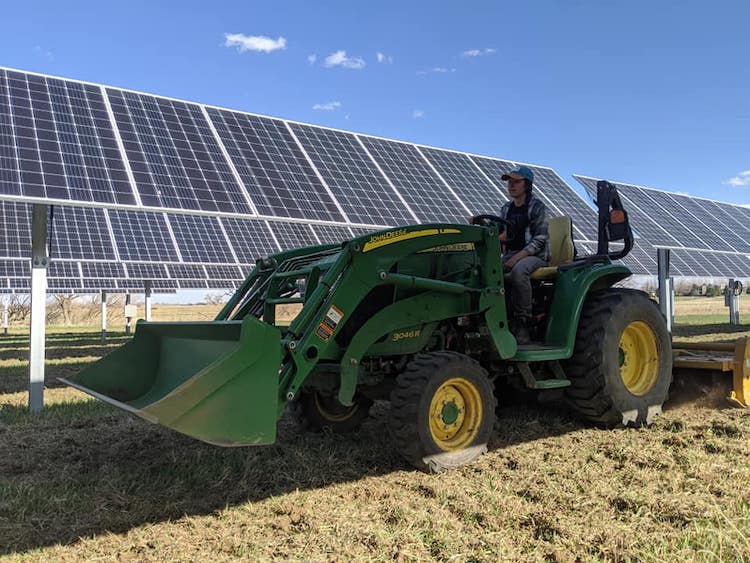
Photo: Jack’s Solar Garden/Facebook
Byron Kominek’s history with farming runs deep. His grandfather, Jack, purchased his family’s farm in Colorado in 1972. Ever since, it’s remained in their hands; but, like many farms, it was running into financial issues. That’s where Byron, who had worked for the Peace Corp and as a diplomat in Africa, stepped in. Byron has spent summers on the farm and felt a deep connection with the business. Now, he’s transformed the hay and wheat farm into a cutting-edge agrivoltaic project.
Byron’s wish to see the family farm thrive brought him down a path of investigating renewable energy. He’d been intrigued about the possibility of installing solar panels to make the farm self-sufficient while also allowing it to earn money by selling power back to the local grid. However, Boulder County wasn’t initially open to the idea.
“They said, land’s for farming, so go farm it,” he told NPR. “I said, well, we weren’t making any money, you all want to be 100% renewable at some point so how about we work together and sort this out.”
He then got together with researchers at Colorado State University and the National Renewable Energy Lab, who had been looking at ways to grow crops on the land under solar panels. What happened next is incredible. Thanks to a change in Boulder County’s land use code, last year he was able to install solar panels on the first pasture. Spacing them wide enough for his tractor to drive through, he planted his crops and waited to see what would happen.
View this post on Instagram
It didn’t take long for him to realize that he was onto something. The partial shade of the solar panels actually helped the crops and allowed him to use less water, as it didn’t evaporate as quickly. In fact, research has shown that crops grown under solar panels need up to 50% less water. That’s incredible news at a time when droughts are commonplace in the West.
Kale, tomatoes, squash, pumpkins, and peppers are just some of the vegetables that are thriving on the farm, which has been renamed Jack’s Solar Garden. As they grow, the solar panels are also doing their part to both power the farm and gather energy. The inverters on Byron’s farm collect enough electricity to power 300 homes; it’s electricity that gets placed back onto the local energy grid and earns the farm money.
Currently, 3,200 solar panels sit on the 24-acre farm, which grew more than 8,000 pounds of produce this year. While so far things seem to be a success, there was an enormous risk in the set up. One of the pain points for farmers interested in agrivoltaics is the initial cost.
For Byron, that meant putting up the farm and the solar arrays as collateral in order to finance the $2 million in solar panels. But for him, the gamble was worth it. Besides, as he notes, farming is all about taking risks.
Jack’s Solar Garden: Website | Facebook | Instagram
h/t: [NPR]
Related Articles:
Farmer Devotes Half an Acre of His Land to Grow Food for Hungry Wild Birds
This 2-Acre Vertical Farm Is Managed by AI and Robots and Uses 99% Less Land
This Wind-Powered Vertical Farm in Denmark Will Provide 1,000 Tons of Food Annually
Former U.S. President Jimmy Carter Built a Solar Farm in His Hometown That Powers Half the City
